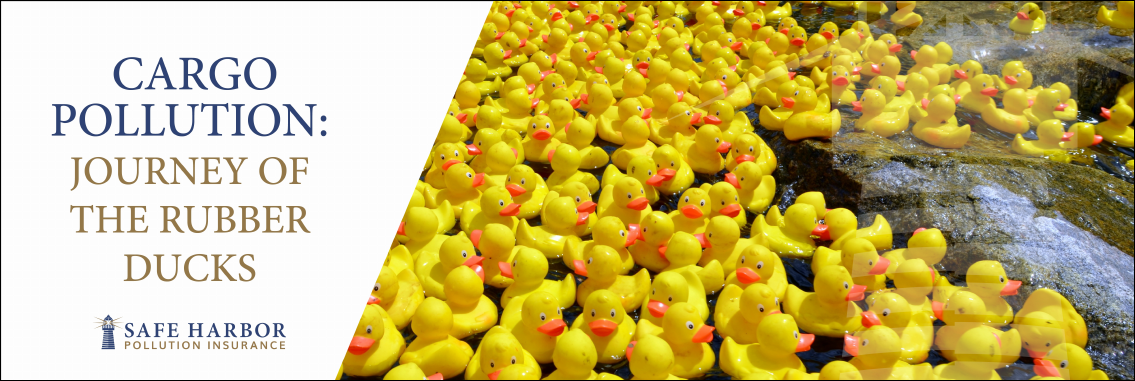When you think of the term “pollution” you may automatically imagine black smoke billowing out of factories, or thousands upon thousands of cars stuck in a traffic jam.
Safe Harbor manages a different type of pollution, but one equally dangerous to the planet and all those living on it: marine pollution.
Every day, thousands of vessels cross the world’s oceans. Some, unfortunately spill oil, polluting the waters, while cargo vessels in particular are laden with consumer goods: everything from computers and teddy bears to clothing and athletic equipment. You’ve probably seen these ships and their giant aluminum containers. Many of them make safe, successful voyages time and again.
Some do not.
Rubber Duck Escape
In 1992, the cargo ship Ever Laurel lost 12 containers in a storm. Inside one of those containers was a shipment of nearly 30,000 “Friendly Floatees” – better known as rubber ducks. Once the ducks escaped from their aluminum housing and subsequently their cardboard containers, they did what they do best – floated – and began quite the epic journey.
A few scientists realized they had a great opportunity to put the errant ducks to work. Since the ducks could conceivably float around for years, these researchers would track their movements and to better understand the strength and speed of oceanic currents.
Oh, The Places They Went
In November 1992, the rubber ducks popped up 2,000 miles away in Alaska. They typically appeared in small groups up through August 1993 before undertaking a three-year trip to Washington State. It’s believed that the ducks went back and forth in or circled the Pacific for a time, heading first west to Japan, then back east toward Alaska and finally south to Washington.
Between 1995 and 2000, some ducks even passed through the Bering Strait and into the Arctic (frozen into the ice, to boot!) before reaching the Atlantic Ocean and the Eastern Seaboard.
Currents and Pollution
The visual appeal of the rubber ducks unfortunately does not change the fact that they are part of the ongoing problem of ejected cargo pollution. A few ducks may even have wound up in the Great Pacific Garbage Patch, a “trash vortex” covering almost 8 million square miles.
What the rubber ducks did manage to accomplish was bringing international attention to the danger of cargo pollution - and awareness that pollution from vessels isn’t limited to oil. Nothing that falls off a ship sits in one place waiting to be collected. It is carried off by the ocean and may end up crisscrossing the globe. Depending on its rate of decomposition, the cargo may end up leaving a “trail” of damage across a vast swath of the sea.
Cargo pollution is an unfortunate byproduct of our global society, but each spill provides an opportunity to help the maritime industry see where it can do better.
Find out how Safe Harbor mitigates pollution when it occurs.




